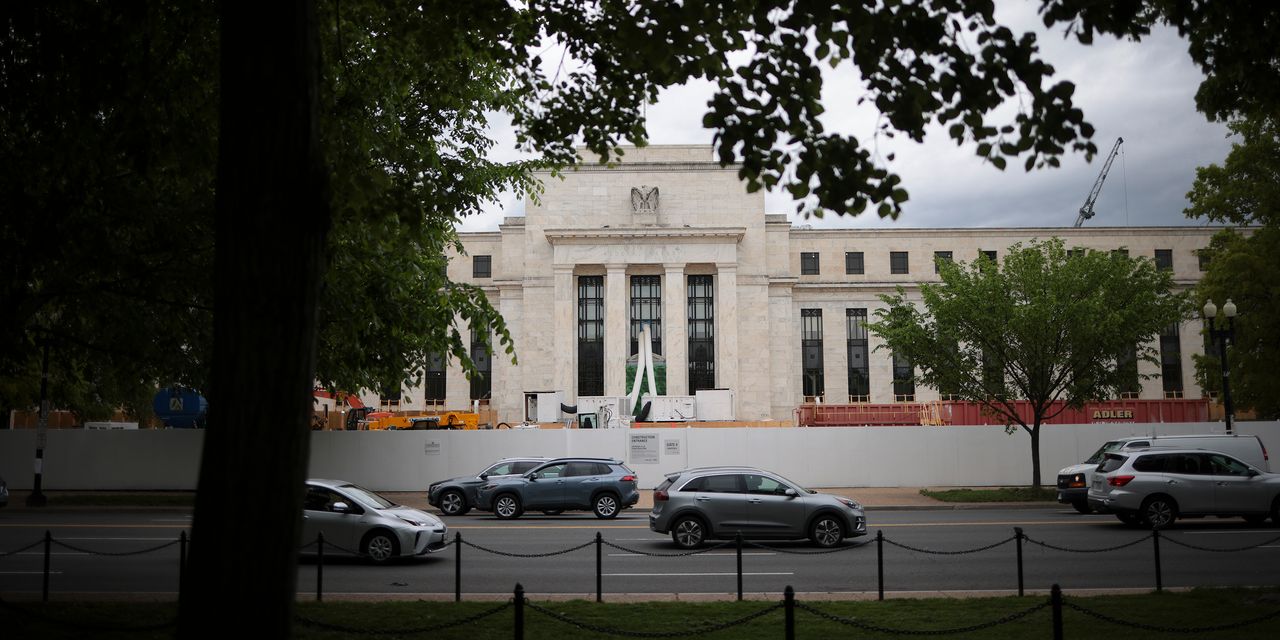This past week’s economic narrative went something like this: The Federal Reserve’s interest-rate increases have set off a crisis among regional banks that will produce a crippling credit crunch and send the economy spiraling into an imminent recession.
By Thursday, regional-bank stocks were in a free fall again, just days after the rescue of First Republic Bank by
JPMorgan Chase
(ticker: JPM) supposedly had staved off a widening crisis. The Federal Reserve had just raised interest rates for the tenth time the day before, and the markets were pricing in rate reductions by the central bank as soon as July to counter the anticipated economic fallout from the apparent bank crisis.
But a day later, new numbers contradicted the negative narrative. The data, moreover, underscored that the real economic problem—inflation—remains. If anything, the Fed has more room to raise interest rates than to cut them, presuming it follows the numbers.
April’s employment report showed a 253,000 increase in nonfarm payrolls, roughly a third more than the consensus of economists’ forecasts. The unemployment rate dipped by one-tenth of a percentage point, to 3.4%, the lowest since May 1969, rather than ticking up by that much, as economists had guessed. And with the lower jobless rates, average hourly earnings were up more than expected, by 0.5% in the latest month and 4.4% from a year ago.
As always, there were nits to be picked out of the latest jobs report. April’s payrolls gain was offset by downward revisions totaling 149,000 in the two preceding months. Part of the latest rise in payrolls was due to the Department of Labor’s so-called birth/death adjustment to reflect assumed net business formations. And the separate survey of households showed a slight dip in the labor force, which flatters the jobless rate.
The bottom line, as neatly summed up by Jefferies economist Thomas Simons, is that demand for labor is easing but its supply is increasingly scarce. That means wage growth has to slow substantially before the Fed’s 2% inflation target is reached.
To cool inflation in past economic cycles, the Fed has historically lifted its federal-funds target above the rate of increase of average hourly earnings for nonsupervisory workers (the bosses’ pay being less cyclical). The exception was during the long, slow recovery following the 2008-09 financial crisis, when the struggle for central bankers was to lift inflation to their 2% target.
“Based on the current wage data, history says the tightening cycle has yet to reach its peak rate, and the duration of the higher official rate cycle could extend much further than the markets expect,” writes Joseph Carson, former chief economist for AllianceBernstein, on his blog, whence came the chart, below.
The real interest rate is what’s left after taking away inflation from the nominal rate. At his news conference this past Wednesday following the central bank’s policy meeting, at which it set the new 5%-to-5.25% fed-funds rate, Fed Chairman Jerome Powell posited that the real rate was about 2%, after subtracting what he said was a “reasonable estimate” of 3% for inflation over the next 12 months.
That would be in line with the Fed’s most recent Summary of Economic Projections, compiled for its March 22 meeting, which had the core personal-consumption expenditures deflator increasing at a 3.6% annual rate at the end of 2023 and at 2.6% at the end of 2024. Given that the core PCE deflator rose at a 4.9% annual rate in the first quarter, with no sign of slowing from preceding quarters, 3% inflation for now is a forecast from Washington, D.C.’s favorite economist, Rosie Scenario.
The price shocks resulting from the pandemic are becoming embedded in inflation psychology, however, according to a research note from JPMorgan chief economist Bruce Kasman. As the latest job numbers indicate, past monetary-policy tightening has yet to produce an easing in tight labor markets.
Central banks are embracing “disinflation gradualism” to bring inflation back to target over a two- to three-year period, he says. That aims to avoid scuttling the postpandemic recovery, and now, worsening the financial-sector turmoil.
“However, if central banks are successful in navigating the expansion through this turbulence, they are likely to reinforce the underlying shift in the inflation process now underway and will be under pressure to restart the tightening process,” says Kasman.
Even after Friday’s solid jobs report, interest-rate futures markets remain convinced that the Fed will have to begin to take back its rate hikes starting with its Sept. 19-20 meeting, according to the CME FedWatch tool. By year end, fed futures still had three one-quarter-point cuts priced in by Friday’s settlement.
The March Fed SEP projects a 5.1% year-end funds rate, roughly the midpoint of the present target range. Powell underscored that at his news conference following the May 2-3 Federal Open Market Committee meeting, saying that if the Fed’s forecast is “broadly right, it would not be appropriate to cut rates, and we won’t cut rates.”
After all, rates are only now getting real.
Write to Randall W. Forsyth at [email protected]
Read the full article here


